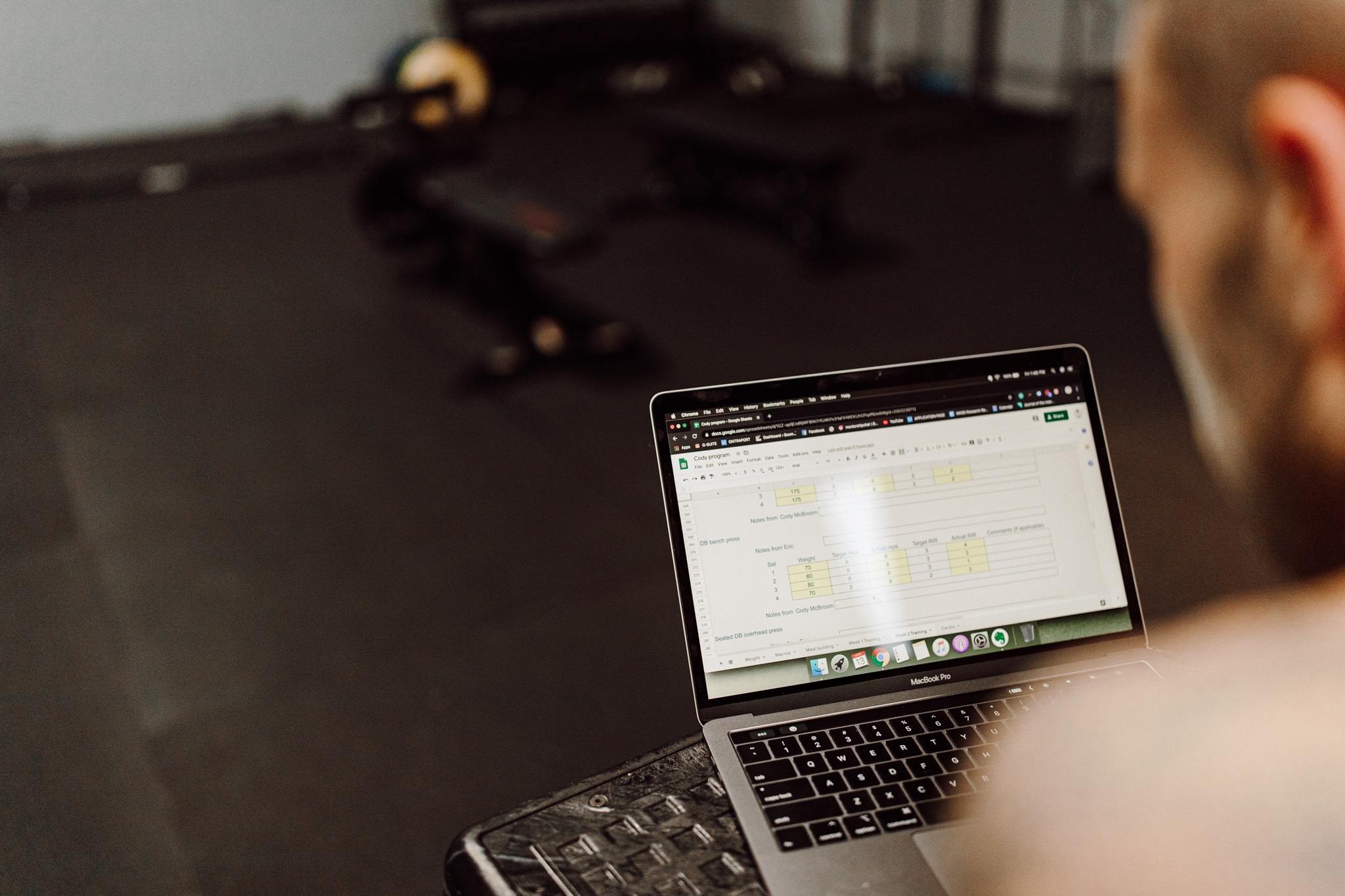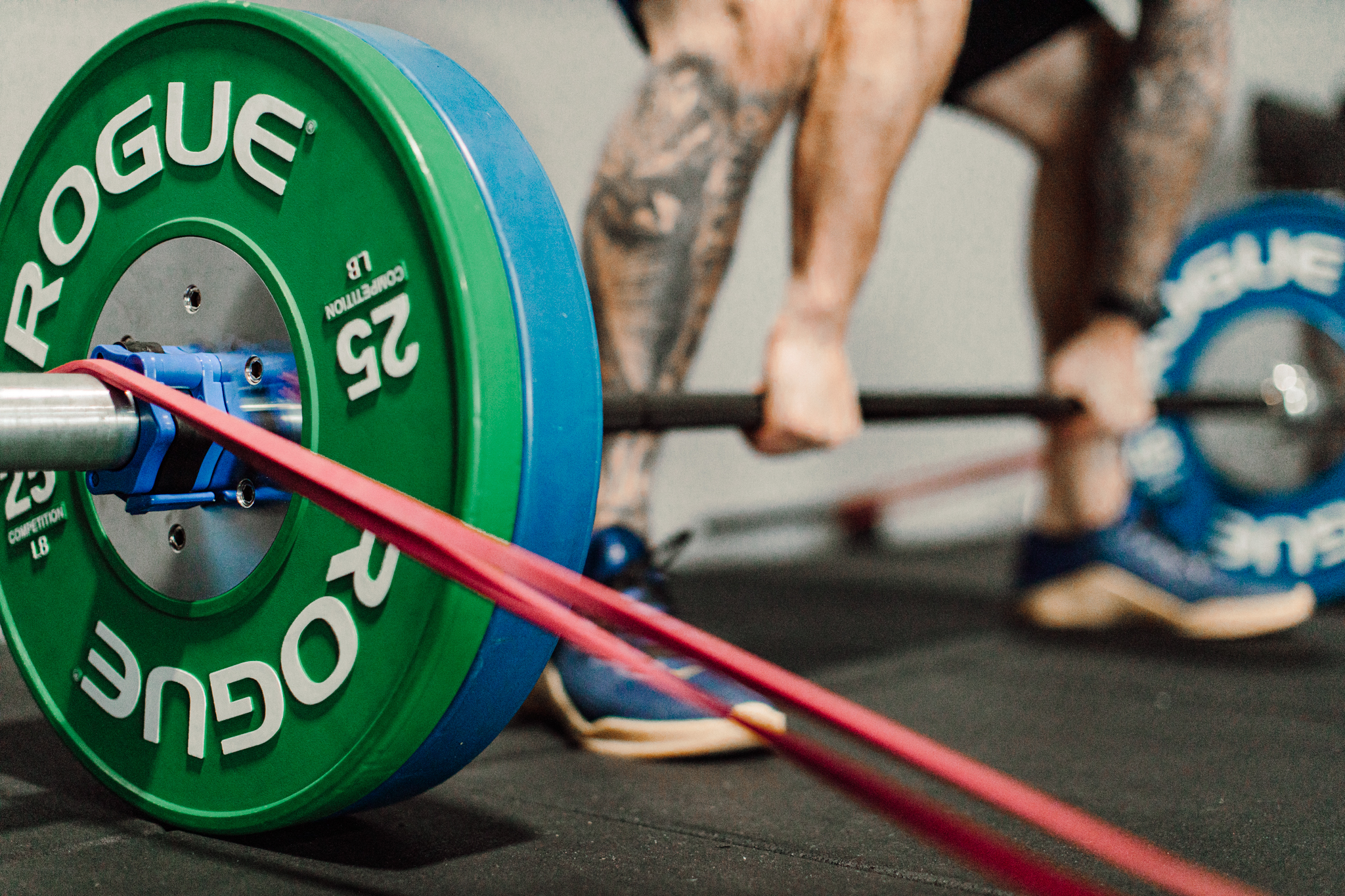Training twice per day, also known as two-a-days, stems from the idea that more is better. For athletes, two-a-days are common because it helps them focus on strength and conditioning separately from sport skills. For example, most collegiate athletes will workout with their strength coach in the morning, then attend a team practice in the afternoon. Pro athletes are similar but have longer training sessions, more time studying their craft (i.e., game tape), and more time committed to recovery. However, most people aren’t athletes. They may only have short periods of time when they can train twice per day.
In this blog we’ll dig into the research on two-a-day training. Then we’ll determine when and/or if doing two-a-days is necessary, beneficial, or detrimental to your goals whether those revolve around hypertrophy, strength, or endurance.

Two-A-Day Resistance Training Research
There are only a handful of studies on two-a-day resistance training. In 1994, Häkkinen and Kallinen investigated neuromuscular adaptations in 10 female athletes during an intensive resistance training program for 3 weeks and during a separate second 3-week training period, when the same volume was distributed into two daily sessions instead of one. The authors found that distributing volume into two daily sessions caused a 5% increase in strength compared to one daily session, but did not significantly improve muscle size.
Likewise, in another study, Häkkinen and Pakarinen found that male strength athletes performing 2 weeks of twice-daily training experienced great gains in strength compared to those performing 1 session per day. Building on this data, a study published in 2007 by Hartman et al., compared the responses in 10 nationally competitive male weightlifters during 3 weeks of once- versus twice-daily resistance training sessions with similar training volume. The authors found no significant difference for any of the dependent variables, but the twice-daily training showed a 2% greater increase in strength.
These two studies were only three weeks long, which isn’t much time to see differences between the groups, yet they still found a small benefit for splitting up training for increases in strength. More recently, Correa et al., (2022) completed an eight week study on young, healthy men who had 3 years of training experience. The authors assigned participants to 1 of 2 experimental groups who completed 16 sets per day per muscle group, twice per week for 8 weeks. In one group every muscle group was trained once a day and in the other every muscle group was trained twice.
Ultimately, the findings indicated that 1RM back squat strength improved by 17% in the group who trained twice per day, but only by 8% in the group who trained once per day. There was very little difference in 1RM bench press improvements with both groups gaining ~5-6%. Furthermore, there were no differences in muscle hypertrophy between groups.
Two-A-Days For Hypertrophy

Frequency, volume, and intensity are the main training variables to manipulate for maximizing muscle growth. To sum up the literature quickly, programs to maximize muscle hypertrophy should train each muscle group at least twice per week, with at least 6-8 sets per muscle group per session and 12-24 sets total per week.
The studies in the above research section do not find a benefit for increasing hypertrophy if you split the same amount of volume into two sessions instead of one. Yet, there may be some long-term benefits from a mechanistic standpoint because glycogen stores are depleted by >40% during high volume training. Glycogen stores replenish rapidly (~4-6 hours) when eating adequate carbohydrates (1.2g/kg/hour). If nutrition is periodized around training, then refilling of glycogen could enable more volume or intensity across two sessions, which could result in more volume and in-turn more hypertrophy over the long-term.
Based on the current research this would have to be done for more than 8 weeks to see a benefit, and overall, doing two-a-days may not have a benefit at all for hypertrophy.
Two-A-Days For Strength

The motor learning theory dictates that practicing a given exercise more frequently over time leads to better skill acquisition, conceivably through neural enhancements. Research currently suggests that training a muscle group 2-4 times per week with at least 3-4 sets per exercise at >80% 1RM will cause optimal strength gains.
However, the evidence is mixed and these recommendations are highly debated. The correlation between hypertrophy and strength is strong (~70%) so completing high volumes of training is important to maximize strength over the long-term.
In terms of the research mentioned above — there appears to be a modest benefit for strength improvements by splitting your training into two sessions in a day. This is likely due to the fatigue that is accumulated during high intensity (as % of 1RM) training, which can be dissipated over the time between two sessions in a single day.
Indeed, one study found that the recovery process may be accelerated by splitting a high resistance training volume into two different training sessions performed in 1 day. Based on the minimum research published, if there is one benefit to training twice-a-day it’s for strength.
Two-A-Day Endurance Training Research

Twice-per-day training is slightly more common in the endurance literature than in the hypertrophy or strength literature. Indeed, two-a-days are used to facilitate a concept known as “train low, compete high” whereby training twice in a day enables training at low glycogen levels. This can be seen in a few different studies. First, in untrained participants, one study suggests that training twice every other day, for 10 weeks, could be better than training once every other day for biomarkers of endurance capacity (i.e., citrate synthase).
Other studies agree, but the evidence isn’t very strong, and training twice per day does not seem to benefit those who are highly trained. All of this taken together indicates that training twice per day for endurance purposes is not likely to lead to optimal performance.
Two-A-Days For Endurance (Sport)
Given there are only a handful of studies on the topic, which are very diverse in methodology and participant training level, it’s not clear that training endurance using two sessions in one day [via long intensity steady state (LISS) or high intensity interval training (HIIT)] will increase performance for everyone.
There may be a small benefit for those who are untrained, but those people are likely to improve due to the novelty of training in general. So, for now, it doesn’t appear to be beneficial to train endurance twice per day.
Two-A-Days For CrossFit™ & Concurrent Training

CrossFit consists of strength, endurance, and high intensity interval training, often completed in the same session. CrossFit is a form of concurrent training since it incorporates both aerobic and anaerobic training. If you listened to our podcast on a recent concurrent training study, you may remember that fatigue is the major problem when concurrent training.
Furthermore, in my concurrent training article for powerlifters, it is recommended that endurance and resistance training be separated by at least 3 hours, but ~24 hours is ideal if your goal is to maximize strength or hypertrophy.
This means that you should be training endurance and strength on different days if your goal. However, if your goal is to improve endurance performance — or if you’re an endurance based (non-elite) athlete — then you can likely do both exercise modalities in one day without any major drawbacks.
Practicality of Two-a-day training
Time
Splitting training into two sessions can make workouts shorter, which could be beneficial if you have small blocks of time during the day where you can workout. This could be very useful if you have access to a home gym and can pop into the gym multiple times per day.
Sport Skills
As mentioned at the onset of the article, it could be beneficial for athletes who play sports to split their training to focus on strength and conditioning in one session and sport skills in another session. This could also be applied to sports like weightlifting, where technique is very important.
Training Camps & Retreats
There is something special about going to training camp for a sport or fitness goal. This could be in the form of a weeklong retreat where you refocus yourself (e.g., yoga, etc). Or it could be a week where you visit your best friend and spend time rediscovering your love of training, ensuring that you’re eating good food, sleeping, and making progress in the gym.
For an athlete, it could be a few weeks before the season starts where you bond with your team while fine-tuning your body and skills for the upcoming season. All of these are beneficial, but not necessarily because you’re working out twice a day. It’s more of a mental reset than a fitness booster pack.
Concluding Statements:
Dr. Brandon Roberts, PhD – Chief Science Officer of Tailored Coaching Method
To be clear, there isn’t much research on two-a-day training. The current literature suggests there may be a benefit for doing two sessions per day to increase strength, but two-a-days aren’t likely to be beneficial for hypertrophy or endurance.
However, there is a benefit for splitting your training into two sessions if you are doing different modalities (i.e., concurrent training) and want to maximize hypertrophy, strength, and endurance at the same time.
Cody McBroom – Director of Coaching, CEO, and Founder of Tailored Coaching Method
There’s not much I can add to the content our CSO Brandon created for this blog post, however I will add one single note for those more interested in hypertrophy than anything else.
The research doesn’t suggest much benefit to hypertrophy from performing training in a tw0-a-day fashion, however I’d argue that a.) there isn’t enough research specifically on two-a-day training with this goal in mind (most is for sport, endurance, and strength) and b.) the research participants that would be required for a study to show added benefits for hypertrophy are very likely to be highly advanced lifters and bodybuilders, who are unlikely to participate in any study at all (because they do not want to change their current routine for a study, or anything at all for that matter).
Knowing this AND witnessing many bodybuilders in the space utilize two-a-day training to their advantage for maximizing hypertrophy, I would simply suggest that it could be a useful tool for a very advanced individual who has maximized their potential within the confinement’s of one-a-day training (mind you, this is VERY hard to achieve).
Once an individual of this stature reaches a level of volume requirements that supersedes what can be done in a single session; due to their time limits, recovery capabilities, and what we know about decreasing MPS levels with per session volume — I believe they may utilize two-a-day training to maximize frequency and split up their volume better throughout the week.
This doesn’t mean two-a-days are the answer, either. This is suggesting that if two-a-days allow you to maximize your volume as an advanced lifter, it could potentially be a beneficial route for you to take for furthering your physique development.




















































































































































































































































































































































































































































































